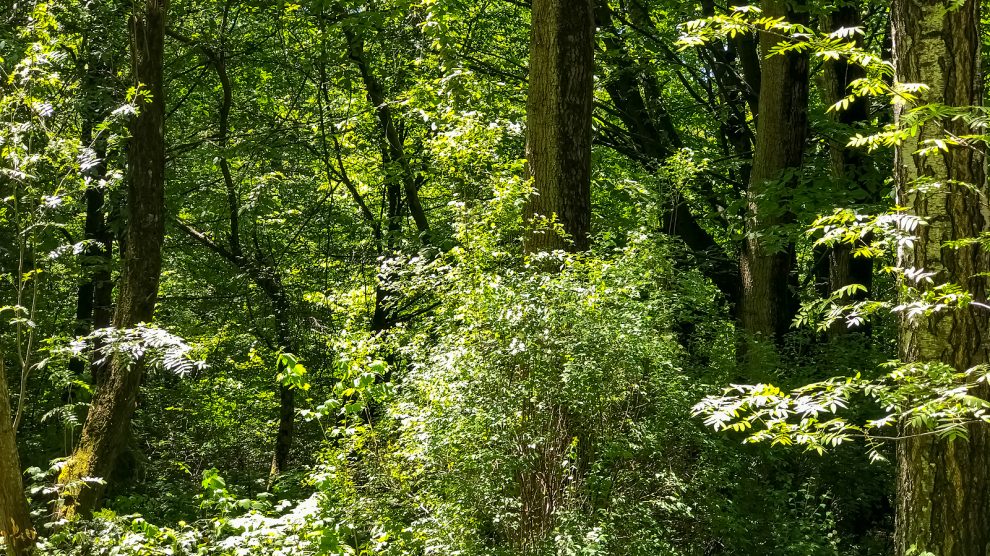Armenia’s existing forests contribute significantly to the economic and environmental needs of the nation. Reforestation can boost biodiversity and climate adaptation while creating new jobs for rural Armenians.
Most of Armenia’s plains and mountains are unforested, covered only by dried grass and hayfields that give the country its distinctive and beautiful desolation. What few forests there are—namely around Dilijan, Vanadzor, and Syunik—are popular among Armenians seeking a shady retreat from the summer heat.
“Forests make up 11 per cent of our country, and it is obvious that this number is not enough for us,” says Aram Meymaryan, Armenia’s deputy minister of environment. “Increasing the forested area is not an end in itself, it is of strategic importance for the sustainable socio-economic development of the country. Conservation and use of the forest should be separated from each other, as each component has its own characteristics.”
- Let down by Moscow, Armenia looks to the West
- In Armenia, a Soviet era gem deserves preservation
- The soul of Armenia: Five essential reads
A recent World Bank report developed in collaboration with Meymaryan’s ministry found that better management of forests could offer Armenia significant economic returns and position the country as a champion of conservation and climate change adaptation.
Each hectare of forest is estimated to deliver on average 417 US dollars per year in total value from timber, fuelwood, water, food, and medicine production—138 million US dollars in total, annually, or roughly one per cent of the country’s gross domestic product.
Meeting the Bonn Challenge of 50,000 hectares (achieving 12.9 per cent of forest cover, up from 11.2) afforested by 2030 is a useful intermediate target toward the stated aim of eventually reaching 20 per cent forest cover by 2050, but meeting the 2030 target will be challenging if a business-as-usual approach to forest planning and governance continues.
Into the woods
Armenia’s forests are threatened by outright deforestation—especially as soaring energy prices have increased the unsustainable harvesting of wood for fuel—as well as degradation from livestock grazing and increased pest, fire, and disease damage worsened by climate change.
Agriculture, mining, and infrastructure development can all clearcut forests while the absence of awareness among the general public about the importance of sustainable forest management, insufficient enforcement of forestry regulations, and lack of alternative, affordable sources of energy all contribute to deforestation indirectly.
Although the Armenian government itself is aware of these challenges, state forest authorities lack physical equipment and the capacity needed for climate adaptation, forest restoration, and nursery management.
Stakeholder consultation and recent studies have produced a highly credible roadmap and action plan, and the field investment contained in the strategy is highly labour intensive representing a potential triple win of enhanced rural development through job creation, biodiversity protection, and climate mitigation and adaptation benefits.
“Armenia faces a unique challenge as it is a forest-poor country,” says Carolin Geginat, World Bank country manager for Armenia. “We have to embrace this challenge as an opportunity and join forces for the realisation of the country’s landscape restoration potential. What is needed is to address financial, policy and knowledge barriers.”
The way is clear
The report calls for the formal adoption and implementation of the Landscape Restoration Strategy
and Action Plan 2022–2032—which outlines creating and maintaining institutional environment and steering, developing capacity and necessary infrastructure, and scaling up the implementation of forest improvement measures as strategic priorities—as a national strategy.
Responding to land degradation is hampered by the absence of up-to-date information on the extent and quality of tree and forest resources nationally as forest-based ecosystem services are neither clearly identified nor appropriately valued economically. To address this obstacle, the report calls for the establishment of a centralised forest management information system to organise data collection, planning, and management of day-to-day activities in a structured and efficient manner. Systematic recordkeeping and the application of information and communication technologies (ICT) can improve transparency and the effectiveness of the government’s forest institutions.
Crucially, the report identifies engaging with local rural communities as essential to the success of any strategy. It recommends addressing fuel poverty in rural areas to reduce dependence on unsustainably obtained fuelwood as a heating source through an interministerial plan—including the expansion of natural gas supplies to remote villages through microcredits and tax exemptions for wood imports to Armenia, the promotion of recycling and renewable energy production, and tightening the enforcement of policies and regulations.
If the report’s recommendations are successfully implemented, the country can have a greener future in more ways than one.
Unlike many news and information platforms, Emerging Europe is free to read, and always will be. There is no paywall here. We are independent, not affiliated with nor representing any political party or business organisation. We want the very best for emerging Europe, nothing more, nothing less. Your support will help us continue to spread the word about this amazing region.
You can contribute here. Thank you.



Add Comment